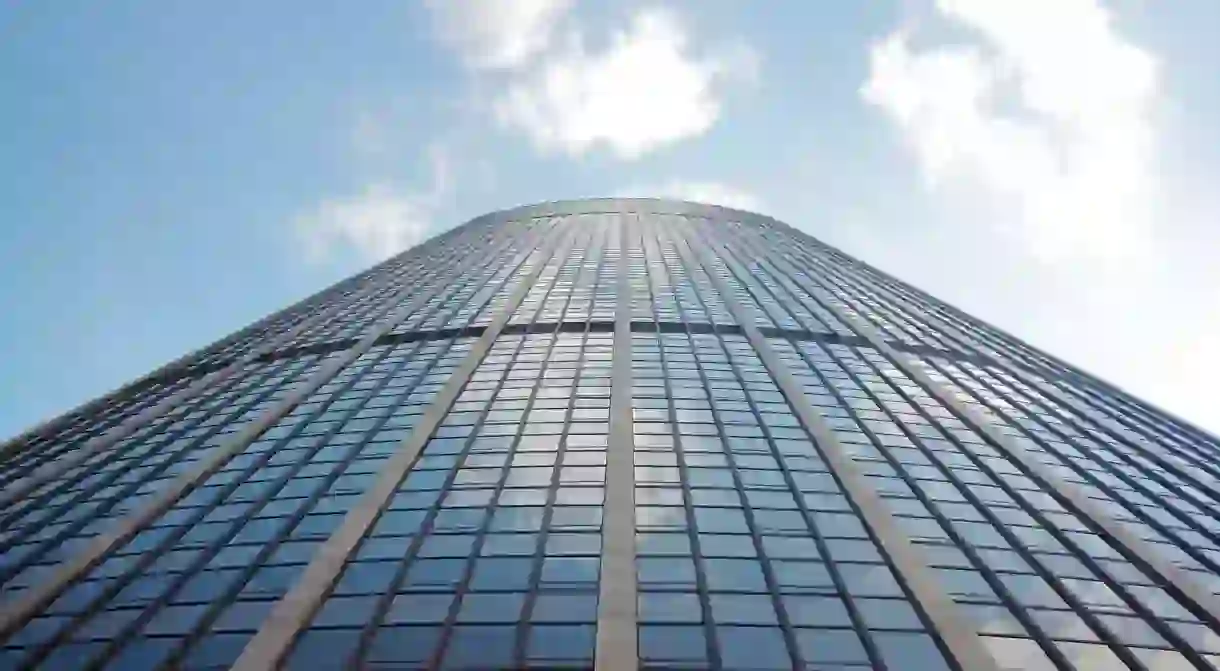The 9 Tallest Buildings in Paris

Paris is a remarkably flat city. Currently, Île-de-France has 17 skyscrapers (buildings with a roof height of at least 150m or 492 ft.), however, all but one of these are located in La Défense, outside the city limits. In the next few years, in spite of some stiff opposition, this could all change. Here we take a look at the tallest structures in the Paris of today and tomorrow.
Eiffel Tower (324m/1,062 ft.)
Completed on March 31, 1889, after two years, two months, and five days of construction, the Eiffel Tower was the first man-made structure to exceed 1,000 feet. It remained the world’s tallest until the arrival of the Chrysler Building in 1930. Its initial life expectancy, following its turn as the main exhibit at the Exposition Universelle, was just 20 years but its use as a wireless telegraph transmitter preserved it for future generations. Repainted every seven years, the next 60 tons of paint to cover the tower will be pink. The two-tower Hermitage Plaza project at La Défense, designed by Norman Foster and due for completion in 2021, will be respectfully capped at 323m (1,060 ft.).

Tour Montparnasse (210m/689 ft.)
The Tour Montparnasse is Paris’ only true skyscraper. Its name is derived from Mount Parnassus, a flattened Parisian hill that was likened to the home of the Muses. In 1934, the SNCF decided to modernize the Gare Montparnasse, however, it wasn’t until 1959 that the first studies for the tower were conducted. Urbain Cassan, Eugène Beaudouin, Louis de Hoÿm de Marien, and Jean Saubot were the four architects who came up with the winning design. In 1969, despite opposition to the building’s scale, President Georges Pompidou approved the project. Following four years of construction, the tower was inaugurated on June 18, 1973.

Tour Triangle (180m/591 ft.)
On June 30, 2015, Paris councillors voted to approve the Tour Triangle in spite of strong disagreement from architectural heritage groups. The glass pyramid with a trapezoidal base will contain a 120-room hotel, 70,000 square meters of office space and, at the insistence of mayor Anne Hidalgo, childcare and cultural facilities. Herzog & de Meuron, an architectural practice from Basel responsible for the Tate Modern conversion in London and the Bird’s Nest stadium in Beijing, designed the building. So long as the necessary permits are obtained, construction will begin at the Porte de Versailles in 2017 and be completed in 2020.

DUO (180m/591 ft. and 115m/377 ft.)
The two towers which make up the DUO have been designed by Jean Nouvel, for the Canadian property development company Ivanhoé Cambridge. Plans for the new skyscraper in the 13th arrondissement, already one of the most built-up areas of Paris, have been in the works since 2011 and in April 2016 it was announced that construction would begin before the end of the year. The mixed-use buildings will contain offices, a five-star hotel, a 279-seat auditorium, and numerous terraces and roof gardens. If all goes well, the towers will be finished by 2020.

TGI (160m/525 ft.)
The Tribunal de Grande Instance (TGI) de Paris is nearing completion in the Batignolles urban development zone, in the 17th arrondissement. The three-tier courthouse, which has a floor space of 104,000 square meters, 90 court rooms, and a processing capacity of 9,000 cases per day, was designed by architect Renzo Piano. Between 2012 and 2014, an unsuccessful objection was submitted by a group of legal professionals who wished to remain at the old Palais de Justice on the Île de la Cité. The first stone was laid on May 6, 2015, and work will finish in June 2017.

Hyatt Regency Paris Étoile (137m/449 ft.)
The Hyatt Regency Paris Étoile can be classed as a skyscraper by way of its 53-meter antenna, which takes the building to an overall height of 190 meters. Until recently the Hôtel Concorde La Fayette, it is one of the largest hotels in Paris with 950 rooms. Located in the Porte Maillot neighborhood in the 17 arrondissement, it is connected to the Palais des Congrès convention center. Both of these structures were built in response to the international tourism boom of the 1960s. The hotel was designed by Henri Guibout, Serge Maloletenkov and Yves Betin

Les Orgues de Flandre (123m/404 ft.)
The highest point of the Orgues de Flandre (Organs of Flanders) in the 19 arrondissement is the top of the Tour Prélude. At 26m (85 ft.) below the official benchmark, the tower is only a skyscraper by Parisian standards but it nonetheless remains, along with the rest of the housing project, an imposing architectural feature on the city’s skyline. Built between 1974 and 1980 and designed by architect Martin van Trek, the development is made up of numerous 15-storey buildings and three other towers: the Tour Sonate at 90m (295 ft.), the Tour Cantate at 101m (331 ft.), and the Tour Fugue at 108m (354 ft.).

Pullman Paris Montparnasse Hotel (116m/381 ft.)
The Pullman Paris Montparnasse Hotel is a 31-storey building in the 14th arrondissement of Paris. It is the second largest hotel in the city after the Hyatt Regency Paris Étoile, however, it has three more guest bedrooms than its rival. It was designed by Pierre Dufau and completed in 1974. In its lifetime, the building has been previously known as the Paris-Sheraton Hotel and the Hôtel Méridien Montparnasse. The hotel also contains a large and popular bowling alley and pool hall.

Tour Super-Italie (113m/371 ft.)
The Tour Super-Italie is the tallest building to have been completed as part of the ‘Italie 13 urbanism’ project of the 1960s and 70s. A second identical tower was supposed to be built on the same block but was canceled when President Valéry Giscard d’Estaing terminated the neighborhood’s development plan. It was designed by architect Maurice Novarina and is distinct from other towers in the area thanks to its cylindrical shape, which also gave it the nickname the Round Tower.














